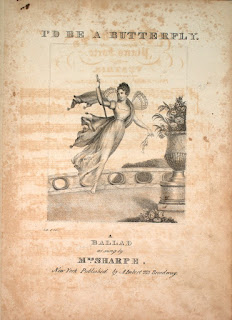A list of locomotives of the Liverpool & Manchester Railway, prepared by Locomotive Superintendent John Melling dated 10 April 1839 lists those locomotives built with his "Patent Improvements", and upon which he has later added in pencil notes on which firms have paid him royalties.
Melling was appointed as Locomotive Foreman at Edgehill Shops of the Liverpool & Manchester Railway in 1833; his counterpart at the Manchester end of the line was Alexander Fyfe. Melling took out a patent in July 1837 for "certain improvements" on steam locomotive engines, which were also applicable to stationary engines.. These "improvements" comprised a radial valve gear, which dispensed with eccentrics, and instead derived the valve motion from a pin on the connecting rod. It also included an
"improved fireplace for a Loco-Motive engine, with hollow bars, and ash-pan so constructed as to form part of the boiler"
Melling's valve gear also included valves with a lap of 3/8inch which reduced back-pressure in the cylinder, by allowing increased time for the exaust steam to escape. Melling informed the Directors of the Liverpool & Manchester that he would not accept any payment from them for the use of his invention; however they insisted in December 1837 to reward him with £100 and pay 50 guineas per locomotive fitted with his valve gear and improved firebox. This was half the charge to other railway companies.
 |
| Melling's Radial Valve Gear, patented in 1837 and in use into the 1860s (after D K Clark) |
In March 1838 the Directors contracted to fit ten new locomotives with his valve gear. Amongst this list were six "Luggage Engines" ordered from Messrs. Todd, Kitson & Laird of Leeds:
Lion at Rainhill in 1980
- Lion
- Tiger
- Panther
- Leopard
- Elephant
- Buffalo
All six were fitted wtih the patent valve gear and firebox, at a cost to the Company of £52 20s 6d.
With the re-organisation of the L&M Locomotive Department in 1840, Melling was dismissed and replaced by John Dewrance. Melling and his son, Thomas, established the Rainhill Iron Works.
Of the six locomotives ordered from Todd, Kitson & Laird, only Lion survives, but it does not retain Melling's patent valve gear or other "improvements". The valve gear on Lion is that patented by William Barber Buddicom, who was from 1840-August 1841 Locomotive Superintendent of the Grand Junction Railway Locomotive Department at Edge Hill (literally, accross the tracks from the Liverpool & Manchester Works of John Dewrance). Buddicom's patent valve gear utilised two, linked, V-hooks (called Gabs) which connected with the valve spindle providing fore and reverse gear as well as "mid grear"
 |
| Diagranatic representation of Buddicom's valve gear |
 | |
| Lion's Buddicom gab-gear, with its opposed gabs |
In other words, the valve gear currently fitted to Lion must date from 1841 or later. It is likely that Lion was heavily rebuilt under the orders of John Dewrance in 1841 when he was ordered by the Directors to catalogue the locomotives then in service on the L&M:
"New Engines" - those which have been built entirely new by the Company
"Rebuilt Engines" - those which have had all their parts renewed with the exception of the boiler, firebox and frames
"Repaired" - thiose which have undergone a thorough general repair without altering cylinders, gearing.
Dewrance sold or scrapped five old engines and replaced them with new of his own design in that year; four "Old" engines were "repaired" and a further eight were "rebuilt". It is likely that Lion and her sisters figured somewhere on this list. We know that Lion not only had its valve gear replaced but cylinders also: Alexander Fyfe gives her cylinders 11 x 20 inches but at present she carries them 14 x 18 inches. Lion's original boiler measured 39 x 42 inches in cross-section (i.e. slightly oval); the present boiler has a 40 inch internal diameter/42 inches external.
Further evidence to date Lion's valve gear is that the Grand Junction Railway - with which the Liverpool & Manchester amalgamated in 1845 - stopped using gab valve gear in 1844/5 in favour of Indirect Stephenson Link Motion. Furthermore, Lion's blast pipe reaches into the base of the chimney, something which Carl Friedrich Beyer of Sharp, Stewart had concluded was inefficient in 1847, and, from 1848 the LNWR (of which the Grand Junction was a constituent) adopted shorter blast pipes which stopped just above the top row of tubes in 1848.
 |
| Lion's very long copper blast pipe, reaching up into the base of the chimney. |
The replacement of the Melling Patent valve gear was perhaps due to Melling have left the Liverpool & Manchester, and the company no longer wishing to pay him for the use of his patent "improvements" which would have automatically doubled in royalties. After leaving the L&M, Melling became Locomotive Superintendent of the Dublin & Kingstown Railway, in Ireland.
 |
| John Melling in later life |











